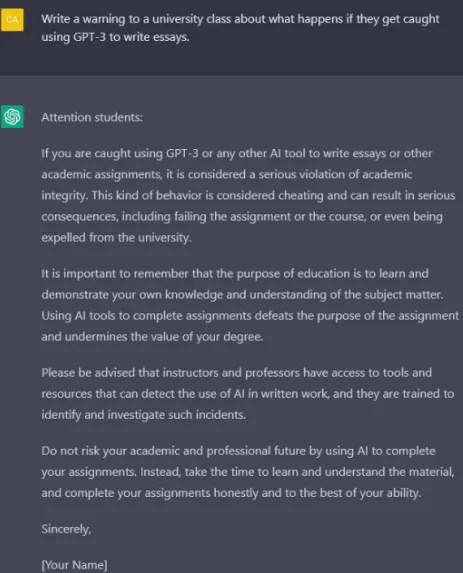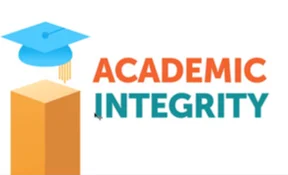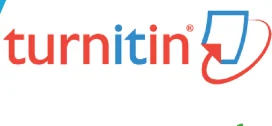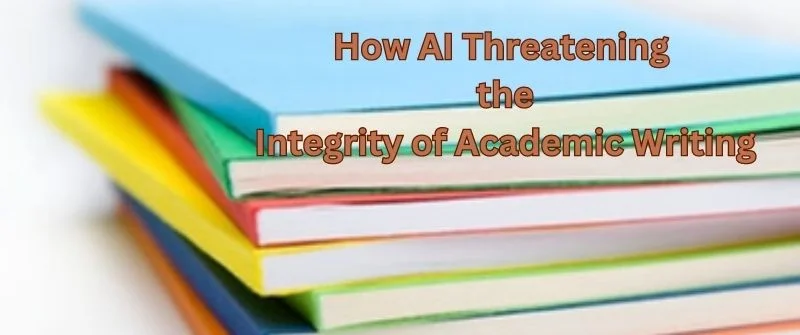Artificial Intelligence (AI) refers to developing computer systems that can perform tasks that need human intelligence. Such tasks include learning, problem-solving, and decision-making.
AI aims to make tasks more efficient and accurate by reducing human error and increasing productivity. AI can be useful in academic writing through tools like grammar and plagiarism checkers, language translation software, and content generators.
In contrast, these tools can be helpful. However, they can also pose a risk to the integrity of academic writing if not used appropriately. For example, content generators may produce low-quality or even plagiarized work, which can result in academic misconduct.
It is vital to use these tools with caution. Ensure that they are used in conjunction with manual review and editing to avoid the negative impact of AI on academic writing.
How AI is Used in Academic Writing
AI, or artificial intelligence, is becoming increasingly popular in academic writing. There are many various ways in which AI can assist with academic writing, including content generation, language translation, and more.
However, using AI in academic writing also raises several ethical considerations.
1. Content Generation

One of the basic ways AI is used in academic writing is by generating content. AI programs can analyze data sets, research papers, and other informative materials to generate new, unique, high-quality content.
2. Language Translation
Language translation is another way in which AI can be used in academic writing. AI programs can be trained to translate text from one language to another accurately.
Such measures allow for greater collaboration and communication across international borders. It can be especially useful in international relations, where scholars from different nations must communicate effectively.
3. Ethical Implications
Despite the potential benefits of using AI in academic writing, there are also many ethical implications to consider. One of the key concerns is the potential for plagiarism.
If AI programs generate highly similar content to existing work, this could be considered plagiarism. Such may lead to serious consequences for the academic community.
4. Potential for Bias
The potential for bias is another ethical concern. AI programs are only as objective as the data they are trained on. This means that they can perpetuate biases that exist within the data.
For example, an AI program trained on biased data against a particular group ends up perpetuating that bias in its output.
5. The Role of Human Expertise
Additionally, using AI in academic writing raises questions about the role of human expertise. It must include the knowledge and experience gained from years of study and research. In comparison, AI can assist with certain aspects of academic writing. As such, there is concern that AI could undermine the value of human expertise in academic writing.
How to Ensure your Writing is Safe from Detection
Tips for ensuring that your writing is not detected as AI-generated:
- Write in your style: You can avoid detection by writing in your style. This will make it more difficult for algorithms to detect that your work is AI-generated.
- Use unique phrases and sentences: Algorithms can detect patterns in language. It is important to use unique phrases and sentences not commonly used in academic writing.
- Avoid excessive repetition: AI-generated writing can often be repetitive. Avoid using the same phrases and sentences over and over again.
- Edit and revise your work: AI-generated writing can often be flawed and contain errors. Always edit and revise your work to ensure it is error-free and maintains a consistent tone and style.
Maintaining originality in academic writing is crucial. It ensures that the work is ethical and meets the standards of academic integrity. Plagiarism and AI-generated content can undermine the credibility of academic writing and can lead to severe consequences for the author.
Moreover, original writing reflects the author’s thoughts, research, and insights. Academic writing should be a reflection of the author’s own understanding and analysis of the topic.
Authors can contribute to advancing knowledge and ideas in their respective fields while maintaining academic integrity by maintaining originality.
Implications of AI-Generated Content on Academic Integrity

The use of AI-generated content in academic writing raises several ethical concerns. The primary concerns are:
Lack of Transparency and Attribution
AI-generated content often needs proper citations and attribution to the original authors, which can lead to plagiarism and copyright infringement. Furthermore, using AI-generated content raises questions about authorship and academic credit.
If AI software generates a significant portion of a paper or article, who should be credited as the author? Should the software be credited or the user who inputted the data and oversaw the process?
Bias and Misinformation
AI algorithms are only as precious as the data they are trained on. If that data is biased or inaccurate, the resulting content will also be as well. This can result to the spread of misinformation and the perpetuation of biased ideas and theories.
Maintaining Academic Integrity
Maintaining academic integrity is essential for upholding the standards of scholarship and ensuring the credibility of academic work. It is essential to follow certain guidelines to ensure academic integrity while using AI-generated content.

To begin, it is essential to make clear to readers that the paper or article in question uses AI-generated content. This can be accomplished in the part devoted to methodology or through the use of appropriate reference and attribution.
Before incorporating AI-generated content into the paper or article, it is necessary to check its correctness and ensure that it is still relevant.
This can be accomplished by using human editors and reviewers to carry out manual checks and reviews.
Last but not least, it is essential to balance the utilization of AI-generated content and that which humans write. Although artificial intelligence can potentially improve efficiency and productivity, it should not be relied on exclusively to create content.
To properly assess and interpret the data and information offered by AI software, it is essential to have strong critical thinking and analysis skills.
Alternative AI Plagiarism Detection Tools
Traditional plagiarism detection technologies may be useful in locating duplicated information from previously published sources; however, these tools may not be useful in locating content generated by artificial intelligence.
However, additional AI plagiarism detection tools are available, and they can identify content of this kind. A brief description of some of these tools is as follows:
1. Copyleaks
Copyleaks is a tool that employs AI algorithms to detect plagiarism in academic writing, including content that AI has produced. It examines the given text in relation to a comprehensive database consisting of online sources and academic databases.
2. Unicheck
Unicheck is a tool that detects plagiarism in academic writing using artificial intelligence and machine learning algorithms. The text is compared to millions of sources, such as online resources and academic databases. A comprehensive report is generated that highlights any similarities that were discovered.
3. Turnitin

Turnitin is a widely utilized plagiarism detection technology that is utilized by a great number of educational institutions. Even though it was not developed to detect AI-generated content, it uses sophisticated algorithms to locate possible instances of plagiarism.
4. Grammarly
Grammarly is a tool that may be used as a writing assistance and can also check for plagiarism. It examines the content you submit with sophisticated algorithms to identify and call attention to any instances of plagiarism there may be.
5. PlagScan
PlagScan makes use of highly complex algorithms to detect instances of plagiarism in academic work. After comparing the text provided to a massive database that includes both internet sources and academic databases, it then provides a detailed report that draws attention to any instances of plagiarism that may have occurred.
When comparing different pieces of equipment, it is essential to consider various factors, including precision, user-friendliness, and cost. It is also vital to remember that there is no perfect instrument and that it may be necessary to use a combination of different technologies to guarantee the detection of AI-generated content. It is something that should be kept in mind at all times.
Additionally, upholding academic integrity by accurately citing sources and avoiding using AI-generated text without providing the proper reference is crucial. By adhering to these two criteria, you can achieve your goal.
Question of Whether Plagiarism Scanners Can Detect AI Content
While plagiarism scanners like SafeAssign may not be effective in detecting AI-generated content, it is still crucial to maintain academic integrity in writing.
As discussed earlier, AI-generated content can pose ethical concerns and threaten the authenticity and credibility of academic writing. Writers need to take responsibility for their work and ensure that they are producing original content.
While using AI tools to assist in the writing process can be helpful, it is essential to properly cite any sources used and avoid the temptation to pass off AI-generated content as one’s own.
By prioritizing academic integrity and taking steps to ensure the originality of their work, writers can uphold the standards of academic writing and avoid potential consequences.
Conclusion
AI-generated content significantly threatens academic integrity as it can be difficult to detect using traditional plagiarism scanners.
However, by following best practices such as properly citing sources and avoiding automated content generators, writers can maintain academic integrity and ensure that their work is original and high-quality.
